
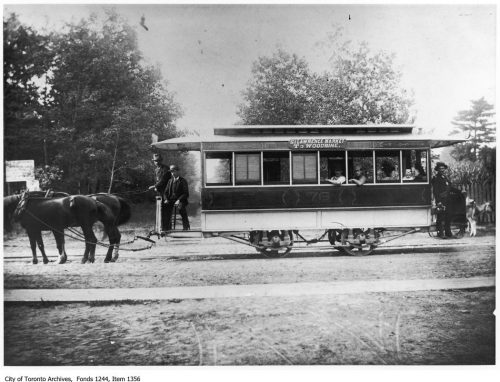
Horse-drawn streetcars began operating in Toronto in the early 1860s. They were limited to a few downtown streets that were not too hilly.
Regular electrified streetcar service was introduced to Toronto on September 1, 1890. The streetcar route ran north along Yonge Street, from the CPR cross-town tracks near Summerhill Avenue to Glen Grove Park near Lawrence Avenue, in what was then suburban Toronto. The service was provided by the Metropolitan Street Railway, which had its own steam-generated electrical power plant on Yonge Street, south of Davisville Avenue.
Electricity was essential for the continued expansion of the Metropolitan’s line up Yonge Street. It would have been impossible for horse-drawn streetcars to negotiate ravines such as Hogg’s Hollow near York Mills. Eventually, the Metropolitan Street Railway provided electrified service all the way north to Sutton, near Lake Simcoe.
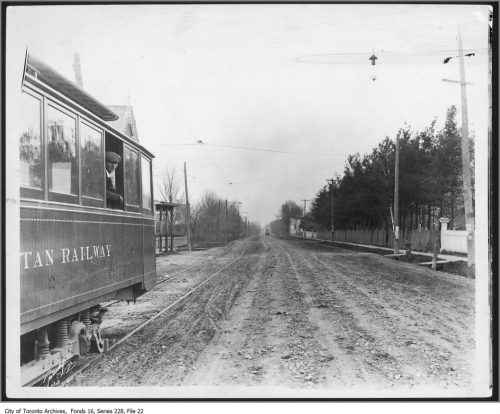
Suburban lines were known as radial railways, as they radiated out from a central hub to outlying areas. It was not long before other companies followed the example of the Metropolitan, and electrified street railways appeared to the east and west of the central core.
Meanwhile in downtown Toronto, the Toronto Street Railway Company proved uninterested in investing in electrified service for customers, since its franchise to provide transportation services was due to expire in 1891.
This was a fortuitous opening for William Mackenzie and his Toronto Railway Company (TRC). On September 1, 1891 he secured a thirty-year franchise to operate Toronto’s streetcar system.
Over a year later, after improvements to the rails and overhead wires had been completed, electrified streetcars built at TRC’s shops at Front and Frederick streets were running on downtown routes. Power for the streetcars was purchased from the Toronto Incandescent Electric Light Company. By August 1894 all of the old horse-powered routes were replaced with the new electric streetcars.
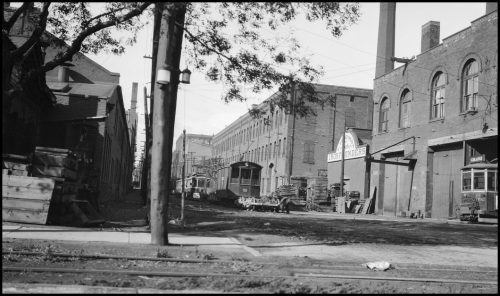
Old TRC streetcars are seen in this photograph showing the massive carhouse and shops that the Toronto Street Railway opened in 1882, and which were taken over by the Toronto Railway Company in 1891. Also shown is the T. Tomlinson & Son Iron Foundry, located at 9-11 Frederick Street near The Esplanade.
When Mackenzie’s franchise ran out in 1921, the Toronto Transportation Commission took over all municipal public transportation.
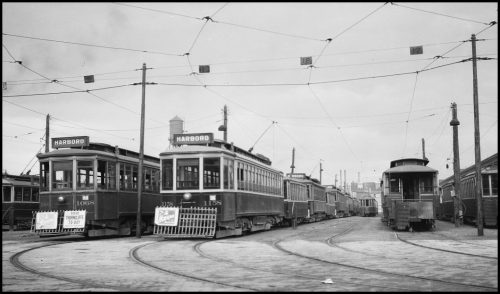
The TTC acquired an inventory of old streetcars in 1921 when it took over the Toronto Railway Company. Note the use of advertising on the fenders on the fronts of the streetcars.
The TTC experimented with another form of electrified transport – the trolley bus. The first of these “trackless trolleys” was introduced in 1922 on Mount Pleasant Road. The electric buses were seen to be more suitable for the less heavily travelled suburban routes.
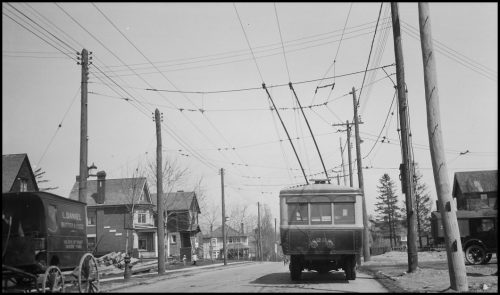
The trolley bus provided another market for electric power, and required less infrastructure than the streetcars which ran on tracks. Buses carried fewer passengers, and were therefore used only on the less busy suburban routes.
However, throughout the twenties and thirties, the TTC maintained its commitment to electric streetcars, and in 1938, they purchased 144 new streamlined streetcars, known as the Presidents’ Conference Committee or PCC cars, at a cost of $3,000,000. These PCC cars, and others purchased later by the TTC, carried millions of passengers between 1938 and 1996, when the last PCC’s were finally retired from the Harbourfront line.
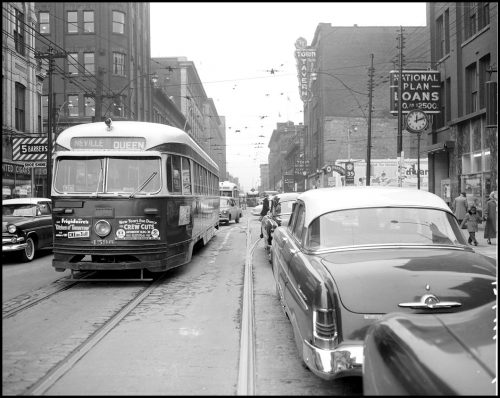
Once a common sight on Toronto streets, the red rocket streetcar was last used in regular service on the Harbourfront line.
The last trolley buses used in Toronto were on the Bay Street route, and the “whisper-quiet” buses were completely out of operation by 1993.
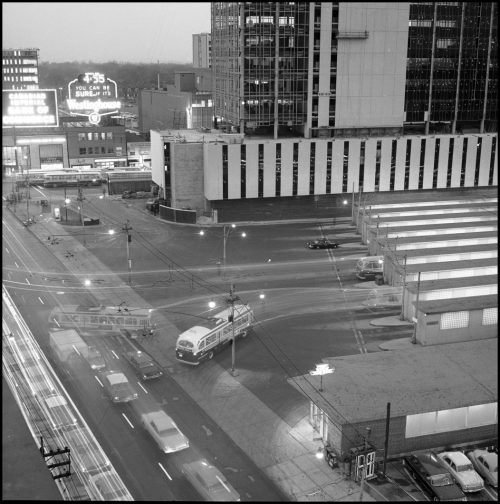
These bus loading platforms at the Eglinton subway station still exist, but have not been in service for several years.
Back to introduction
Next page – Leisure After Sundown